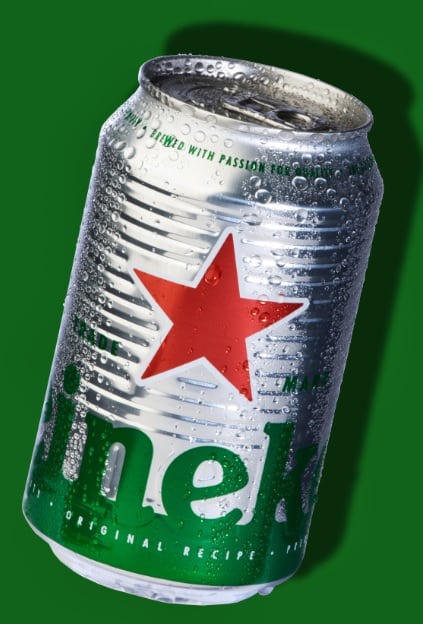For Heineken, the green colour scheme and iconic red star is vital to brand recognition, but the company has recently been exploring textures as a way of revitalising its packaging.
Ramses Dingenouts, senior packaging and identity design manager global commerce for Heineken International, talked to BeverageDaily.com ahead of next month’s EuroPack summit in Monaco.
He also believes it’s important for designers to look beyond their own product design field and collaborate across disciplines and industries.
Heineken’s Groovy Can
Heineken takes great care to retain its branding on new products, said Dingenouts. No matter how different or adventurous the packaging is, there are always some attributes that must be present to ensure brand recognition.
“Branding is key in building our brand,” he said. “As you’d imagine, we do extensive studies to the meaning and power of the different branding elements. Green, the recognizable Heineken wordmark, the iconic red star, etc. It depends on the pack type how we exactly apply it, and how much flex we allow ourselves.”
However, even slight design modifications can have a dramatic effect on consumer experience, says Dingenouts, referencing Heineken’s embossed ‘Groovy Can’. This packaging was developed in conjunction with Ball Packaging, with the design brief to re-energize the brand’s shelf presence in a competitive market, but without compromising on Heineken’s iconic design elements.
Launched in the UK this year, the 33-cl can has grooved edges running around the whole body. Consumers have an enhanced tactile experience, while also benefiting from a stabile grip on a chilled can.

Although Heineken’s traditional keg can was popular, the company wanted a fresh take and something that would appeal to curious, modern, open-minded young adults. It believes this group of consumers are attracted to the can for its functional and portable qualities, while seeing it as ‘cool and progressive.’
“It’s still a can, but the use of the embossing, in combination with the graphics makes that it truly stands out, looks very contemporary and has a recognizable touch,” said Dingenouts.
Several colour schemes were explored but in the end, the bulk of the surface was left unprinted to make the most of the natural reflective qualities of the metal. However, the red star and a green colour strap remain a prominent part of the overall design.
Cost
Cost is a critical factor – even for a company as big as Heineken, said Dingenouts.
“Cost is a hugely important element. It’s actually a central part of the design briefing. If a beer bottle design is great but it doubles the bottle cost, it’s likely to be a no-go. Unless it adds so much value that it’s worth its price. That’s the business case behind each project.”
Dingenouts also encourages innovators to look beyond their own product design field and seek inspiration from cross-industry packaging.
“In general we try to avoid working in silos,” he said. “The more disciplines, industries and people truly collaborate the better the progress.”
Isn’t it the product that ultimately matters, not the packaging?
Dingenouts on Heineken design
Q: What’s the most adventurous and challenging project you’ve done in packaging at Heineken?
A: “Working on the iconic green Heineken bottle was one of the most fantastic challenges. Getting it worldwide consistent, including the tactile elements in the neck and on the back, and translating it to all different content sizes without compromising the bottle’s personality.”
How does Dingenouts respond to the perception that it’s the product, not the packaging, that really matters?
“Yes, it is the product that matters, absolutely,” he said. “But the product needs a pack, otherwise it won’t reach consumers in good order. And that provides the brand the opportunity to use the pack, to engage and interact with consumers. And if a brand does that well, the pack matters a lot as well.”
Ramses will be speaking at the EuroPack Summit, which will be held on September 21-22 in Monte Carlo. Other speakers include The Coca-Cola Company, Bacardi, Anheuser Busch InBev, Kellogg’s, Nestle, and Heinz.
The forum brings together packaging professionals with leaders in the provision of services, technology and information to executives.
